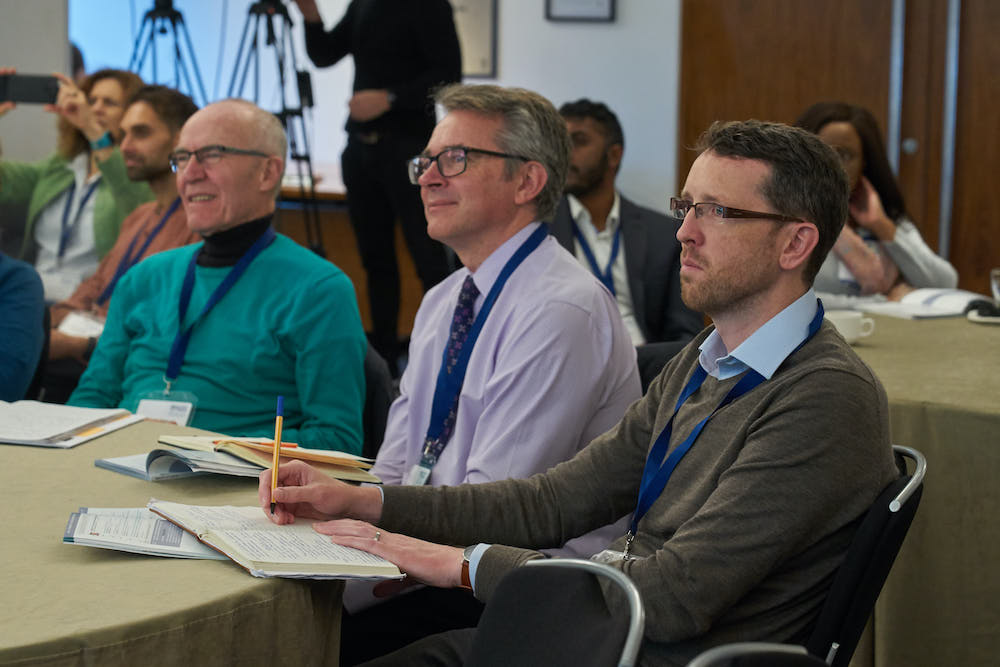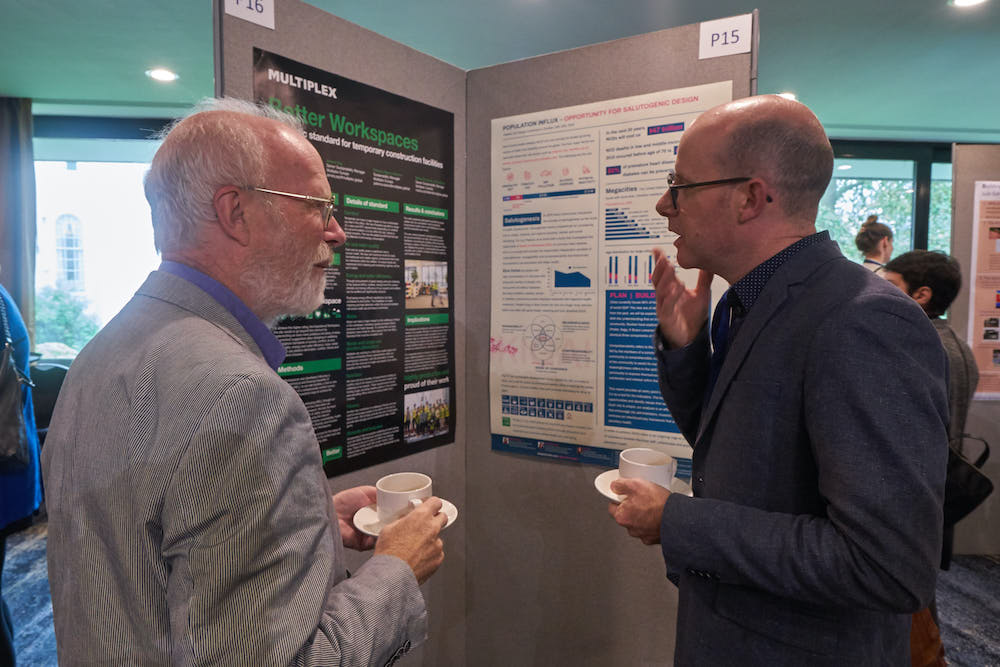As is customary for such a unique interdisciplinary event, Healthy City Design 2021 will feature a wide range of congress streams, in addition to this year’s plenary theme of ‘Back from the brink: Designing for climate, community and social value’.
And our keynote plenary sessions, which take place on every day of the Congress, feature some of the leading protagonists in health creation, planetary health, and city design and planning. Download the Final Programme here.
HCD 2021 International Congress & Exhibition is a global forum for the exchange of knowledge on the research, policy and practice of designing healthy and sustainable cities and communities. Attendees will develop their knowledge of the political, social and economic context, new policy directions, emerging practice, latest research findings, and skills and core competencies in designing, planning and commissioning city services, technology, infrastructure and real estate that improve people and planetary health.
Plenary theme
- Back from the brink: Designing for climate, community and social value

Congress streams
Monday 11 October 2021
- Stream 1: Designing for climate, community and social value
- Stream 2: Pandemic resilience and renewal
- Stream 3: Environment, health and healthcare
Tuesday 12 October 2021
- Stream 4: Homes and neighbourhoods
- Stream 5: Designing for social value
- Stream 6: Mobility, travel and transport
Wednesday 13 October 2021
- Stream 7: The inclusive city
- Stream 8: Urban design and placemaking
- Stream 9: Sustainable development
Thursday 14 October 2021
- Stream 10: Ecological and planetary health
- Stream 11: Work and workplace
Who should attend?
The Healthy City Design International Congress & Exhibition attracts the world’s leading interdisciplinary policy thinkers, researchers and practitioners. The congress will be of interest to:
- City governance and policy

- Urban designers and planners
- Real estate developers
- Commercial property investors
- Sustainability practitioners
- Academics and researchers
- Architects and designers
- Engineers and surveyors
- Health/social care planners
- Public health practitioners
- Occupational therapists
- Business/technology leaders
- Senior public servants
- Environmental groups
- Economists
- House builders
Back from the brink: Designing for climate, community and social value
City centres emptied, working patterns and supply chains disrupted, and urban communities struggling under unprecedented economic and psychological pressures. The coronavirus crisis shone a harsh light over the urban landscape, revealing the deep scars of health and social inequalities as some citizens fared far worse than others. Healthy City Design International 2021 will explore how we can bring our cities ‘back from the brink’ in a green, fair, inclusive and progressive way.
Our cities stared into the abyss during the global pandemic. The concentration of people, resources and networks that gives the urban realm its raison d’etre was challenged to its core by the effects of Covid-19. For urban planners, architects, policymakers and public health professionals now charged with picking up the pieces and formulating a coherent approach to developing the post-Covid-19 city, there are important design issues to address. We see these as relating primarily to three key areas – climate, community and social value.
A series of lockdowns in cities took cars off the streets and planes out of the skies. Air quality improved, more cycle lanes were introduced, and more green spaces too. There is now a broad consensus that there should be no retreat in the aftermath of the pandemic from the ecological gains made during it. We want to make our cities healthier and more sustainable places to live and work. But how can we can rev up the economic machine again without undermining our ambitions in relation to climate change? What urban development, regeneration and mobility strategies would best serve all our interests?
As Britain looks ahead to hosting the COP26 UN Climate Change conference in November 2021, cities around the world are on the frontline of the debate about sustainable futures. Issues around community also came into sharp focus during the pandemic as social and health resilience were tested to the limit. Many communities continue to suffer disproportionately from the effects of Covid-19, raising questions about diversity, inclusion and equity in cities. The built environment is a major determinant of urban health and wellbeing outcomes, so how can the design of our homes, neighbourhoods, workplaces and transport better support community cohesion, placemaking and social resilience?
Underpinning the challenges of climate and community in cities is the idea of social value – that not all value can be measured with market metrics. Social value addresses the wider social, environmental and economic benefits of any project in relation to society; it frames the concept of value, not simply in a financial model but within a human-centric vista of accountability, collective responsibility, dignity, fairness, individual rights, respect, and quality of life. How can our designed environment express this commitment? What research is needed to bring social value to the top of the development agenda?
New ideas, practice and research
The 5th Healthy City Design International Congress will address all of these vital questions. In bringing together the professional disciplines in design, technology, urbanism and health required to reimagine the post-pandemic city, this congress will focus on the challenges around climate, community and social value in cities. It will fuel the debate about what we want our cities to be in the post-pandemic era – and give a platform to new voices, ideas, practice and research.
Previous editions of the Healthy City Design International Congress have looked at creating a culture of wellness, reducing health inequalities, and building resilience in cities. In 2021, we bring it all together in the aftermath of Covid-19 – how can we pull back from the brink and build social value into the development and regeneration of the urban realm?

